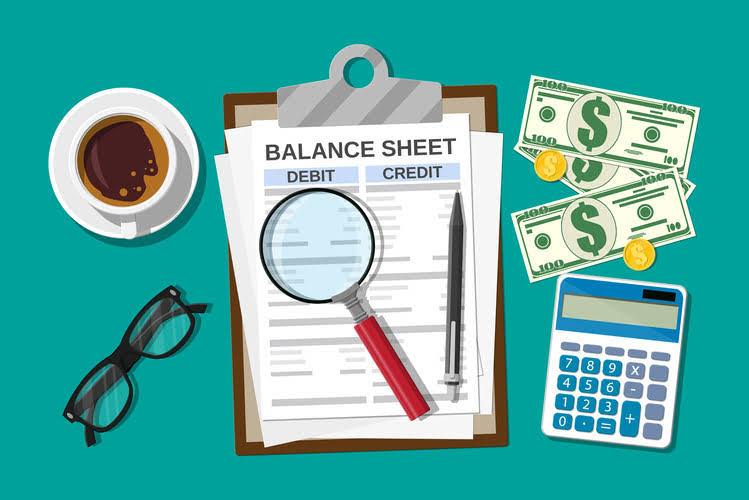
For investors who don’t meet this marker, there is the option of private equity exchange-traded funds (ETFs). Venture capitalists (VCs) provide most private equity financing in return for an early minority stake. Sometimes, a venture capitalist will take a seat on the board of directors for its portfolio companies, ensuring an active role in guiding the company. Venture capitalists look to hit big early on and exit investments within five to seven years. An LBO is one of the most common types of private equity financing and might occur as a company matures.
- Retained earnings are the sum of the company’s cumulative earnings after paying dividends, and it appears in the shareholders’ equity section in the balance sheet.
- In addition to choosing a name, appointing directors, and filing certain documents, incorporation also involves issuing shares.
- In other words, the total amount of all assets will always equal the sum of liabilities and shareholders’ equity.
- In these types of scenarios, the management team’s decision to add more to its cash reserves causes its cash balance to accumulate.
- In small business accounting, you calculate your company’s equity by deducting your total liabilities from your total assets.
Why do investors look at ROE?
Apart from the balance sheet, businesses also maintain a capital account that shows the net amount of equity from the owner/partner’s investments. The value of the owner’s equity is increased when the owner or owners (in the case of a partnership) increase the amount of their capital contribution. Also, higher profits through increased sales or decreased expenses increase the amount of owner’s equity. Current assets are those that can be converted to cash within a year, such as accounts receivable and inventory. Long-term assets are those that cannot be converted to cash or consumed within a year, such as real estate properties, manufacturing plants, equipment, and intangible items like patents. Generally speaking, the differential between the equity value and enterprise value of a company tends to increase the greater its market share and the longer the company is positioned as a market leader—i.e.
About The Motley Fool

The derived amount of total equity can be used by lenders to determine whether there is a sufficient amount of funds invested in a business to offset its debt. It can also be used by investors to see if there is a sufficient amount of equity piled up to press for a dividend. And finally, it can be used by suppliers to see if a business has accumulated a sufficient amount of equity to warrant being extended credit. If a business buys how to calculate total equity raw materials and pays in cash, it will result in an increase in the company’s inventory (an asset) while reducing cash capital (another asset). Because there are two or more accounts affected by every transaction carried out by a company, the accounting system is referred to as double-entry accounting. Outstanding shares refers to the amount of stock that had been sold to investors but have not been repurchased by the company.
Example #1: Issuing more stock
- If a business buys raw materials and pays in cash, it will result in an increase in the company’s inventory (an asset) while reducing cash capital (another asset).
- Read on to learn more about owner’s equity, how it’s calculated, and what’s included in the calculation.
- Every company has an equity position based on the difference between the value of its assets and its liabilities.
- 11 Financial’s website is limited to the dissemination of general information pertaining to its advisory services, together with access to additional investment-related information, publications, and links.
- Treasury shares can always be reissued back to stockholders for purchase when companies need to raise more capital.
- In essence, total equity is the amount invested in a company by investors in exchange for stock, plus all subsequent earnings of the business, minus all subsequent dividends paid out.
The treasury stock records the amount paid by the company to repurchase its stocks from investors. The account has a negative balance, which means it reduces the total shareholders’ equity. Negative ownership equity means total debts outweigh the value of the assets.

ROE Example

The equity value is the fair market value (FMV) of a company’s common equity at present. The Equity Value is the total value of a company’s stock issuances attributable to only common shareholders, as of the latest market close. In most cases, retained earnings are the largest component of stockholders’ equity. This is especially true when dealing with companies that have been in business for many years. If the same assumptions are applied for the next year, the end-of-period shareholders equity balance in 2022 comes out to $700,000.
The number of outstanding shares is taken into account when assessing the value of shareholder’s equity. For a sole proprietorship or partnership, the value of equity is indicated as the owner’s or the partners’ capital account on the balance sheet. The balance sheet also indicates the amount of money taken out as withdrawals by the owner or partners during that accounting period. The liabilities represent the amount owed by the owner to lenders, creditors, investors, and other individuals or institutions who contributed to the purchase of the asset. The only difference between owner’s equity and shareholder’s equity is whether the business is tightly held (Owner’s) or widely held (Shareholder’s). The return on equity ratio varies from industry to industry and depending on a company’s strategies.
Find out whether your company is growing

Although the balance sheet always balances out, the accounting equation can’t tell investors how well a company is performing. For a company keeping accurate accounts, every business transaction will be represented in at least two of its accounts. For instance, if a business takes a loan from a bank, the borrowed money will be reflected in its balance sheet as both an increase in the company’s assets and an increase in its loan liability. However, prudent investors will also take many other factors into consideration, such as earnings per share, return on invested capital, and return on total assets, before deciding to invest.

Scrivi un commento